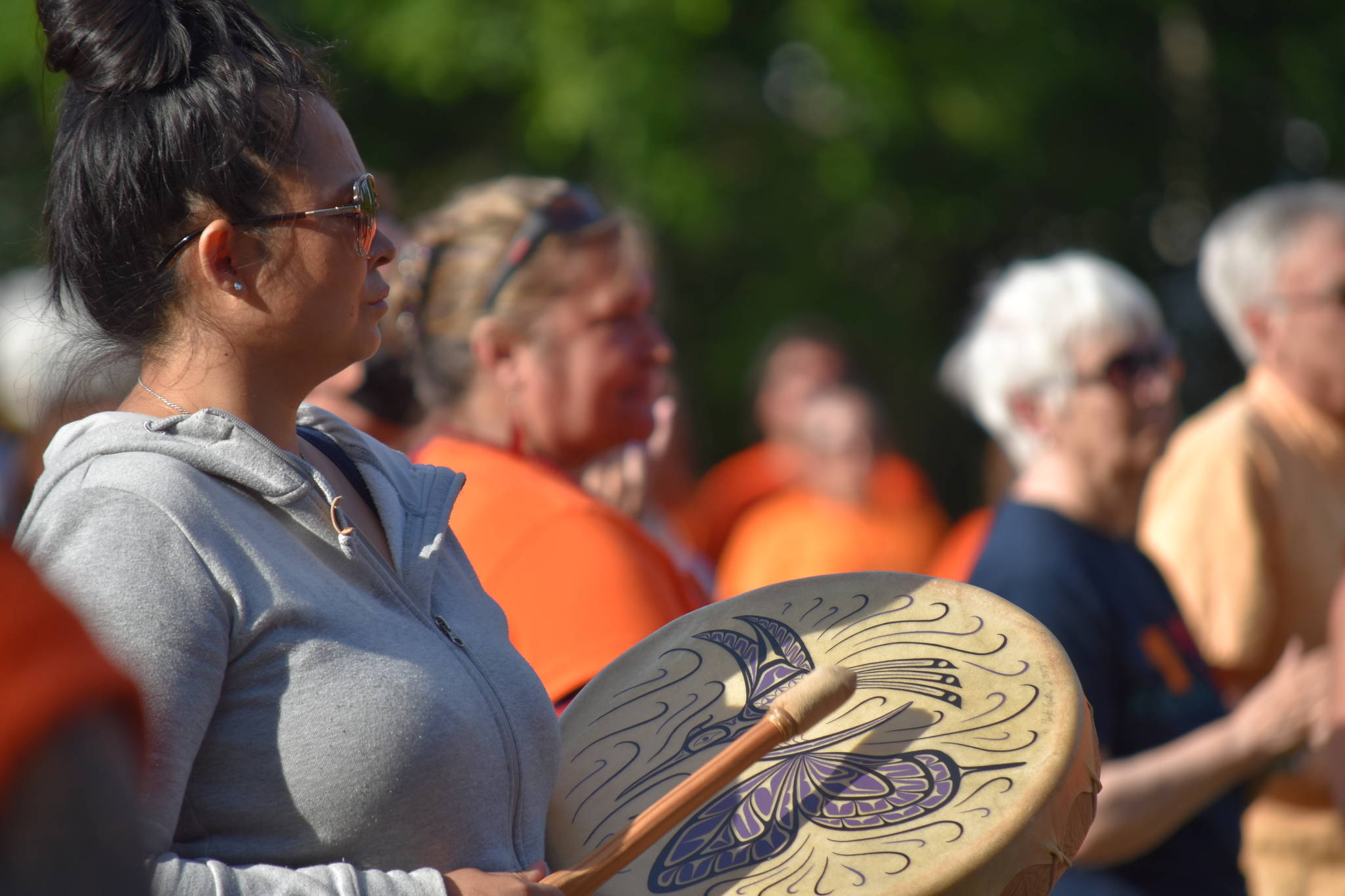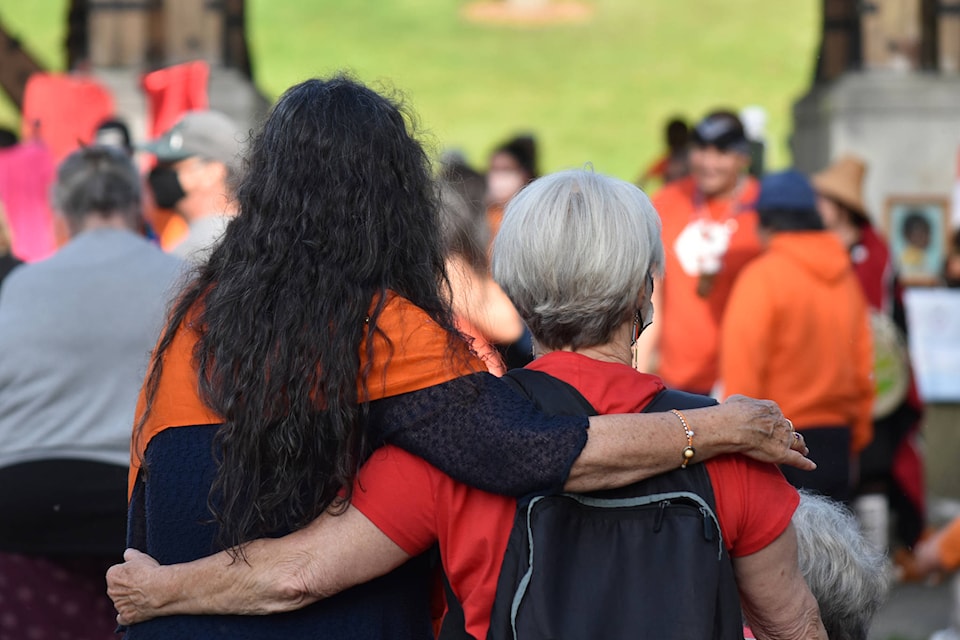Comox Valley residents joined Canadians across the country in paying their respects to the remains of 215 children found buried on the site of a former residential school in Kamloops, last week.
Chief Rosanne Casimir of the Tk’emlups te Secwépemc First Nation said in a news release Thursday, May 27 that the remains were confirmed the previous weekend with the help of a ground-penetrating radar specialist.
Casimir called the discovery an “unthinkable loss that was spoken about but never documented at the Kamloops Indian Residential School.”
She said it’s believed the deaths are undocumented, although a local museum archivist is working with the Royal British Columbia Museum to see if any records of the deaths can be found.
Some of the children were as young as three, she said.
The school was once the largest in Canada’s residential school system.
“Given the size of the school, with up to 500 students registered and attending at any one time, we understand that this confirmed loss affects First Nations communities across British Columbia and beyond,” Casimir said in the release.
The chief said work to identify the site was led by the First Nation’s language and cultural department alongside ceremonial knowledge keepers, who made sure the work was done in line with cultural protocols.
The leadership of the Tk’emlups community “acknowledges their responsibility to caretake for these lost children,” Casimir said.
There have been vigils in cities, towns, and First Nation land throughout the country ever since the announcement of the discovery.
Two separate vigils took place in the Comox Valley Monday - one at the K’ómoks First Nation, and another at Simms Park.
“We honour and pray for those that were lost at all of the many residential schools across Canada and honour the strength of those that survived,” said the K’ómoks First Nation in a post on social media. “Sadly, this tragic discovery is not surprising to Indigenous Peoples, who know too well atrocities that occurred in these schools by church and country.”
Orange hearts covered the front windows at the band office and a row of teddy bears - some holding orange hearts - lined Comox Road between the office and the I-Hos Gallery.
At Simms Millennium Park in Courtenay, a vigil was held on Monday (May 31) with more than 300 people in attendance.
“Many of us are hurting right now - there is sadness, there is anger,” said Kristy Bell, one of the speakers at the ceremony. “But today, we’re here to remember the 215 children. There is plenty of time in the days, weeks, months and years ahead to hold our government to account for what they have done. But today, please let us remember we are here for those 215 beautiful little children who are no longer with us … we are going to be grieving and mourning together for a very long time.”
Speaker Josephine Andrew, whose mother attended Kamloops Indian Residential School, told the crowd the children, in their final slumber, woke the nation.
“I’m really grateful we can walk this path together, and to acknowledge the lives that were taken from us too soon.”
An altar was created in front of the gazebo at the park; Andrew noted the storybooks, toys and dolls, acknowledge that the children in the school were denied the ability to play.
“I can only imagine the homesickness they would have had, the things they would have played with and who they would have become - drummers, singers, moccasin makers.”
Flags are flying at half-mast at all municipal government buildings in the Valley.
- With files from The Canadian Press.
photos@comoxvalleyrecord.com
Like us on Facebook and follow us on Twitter

